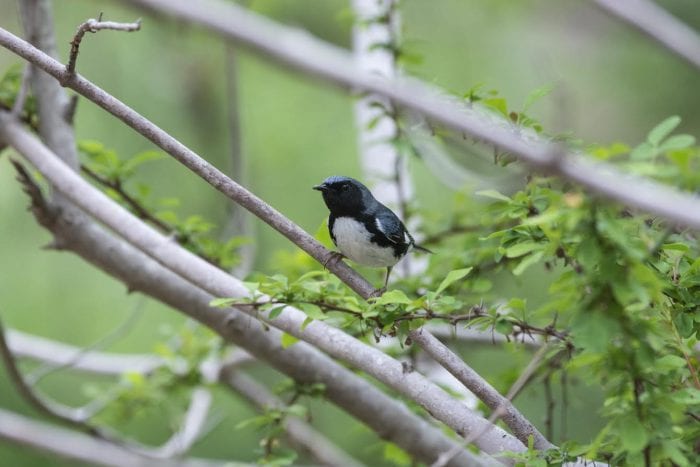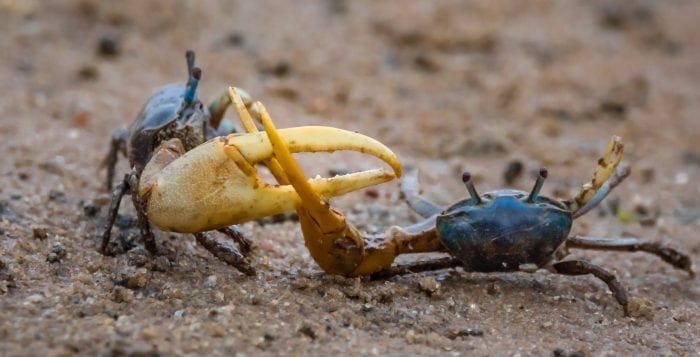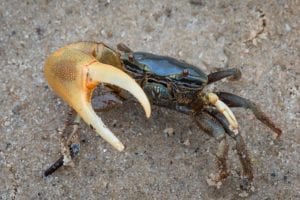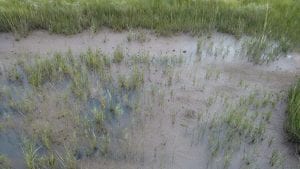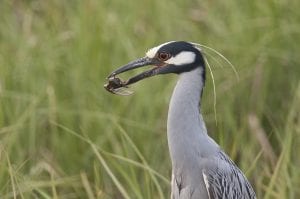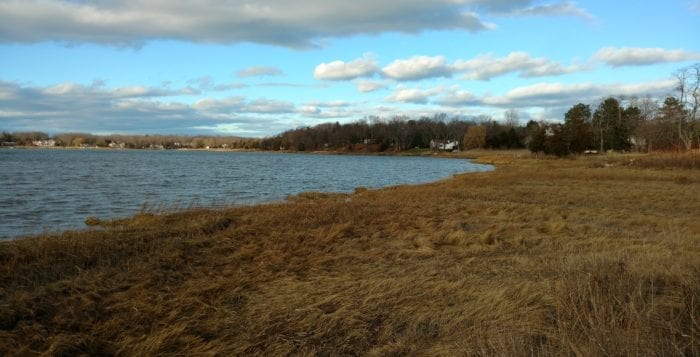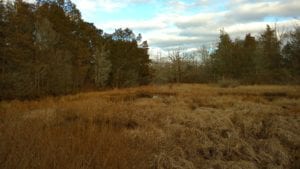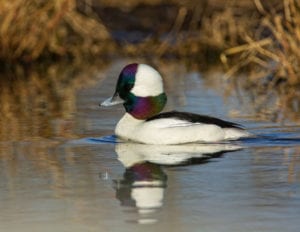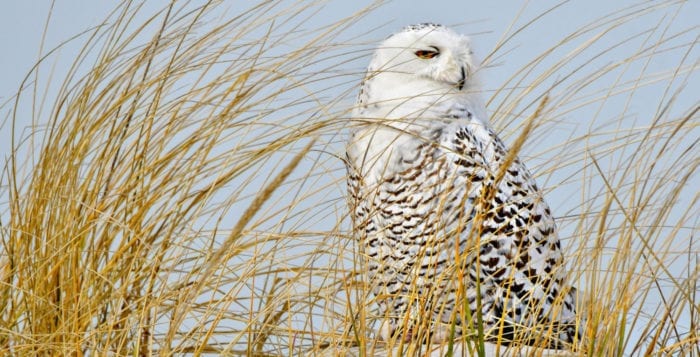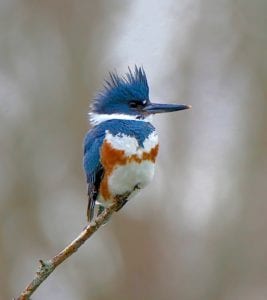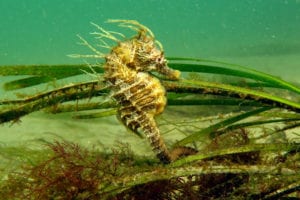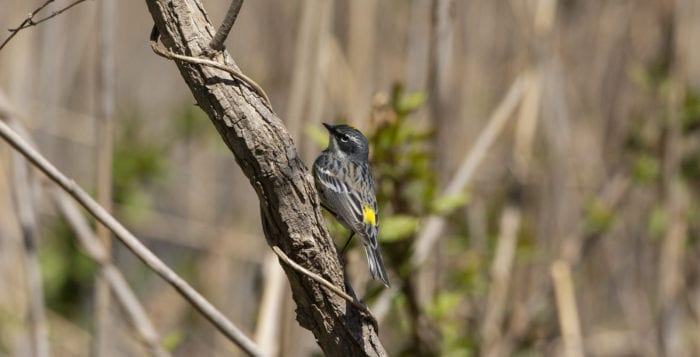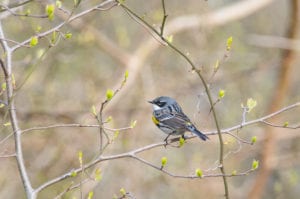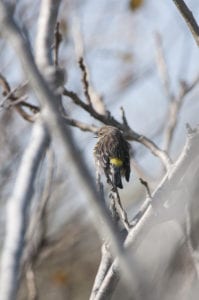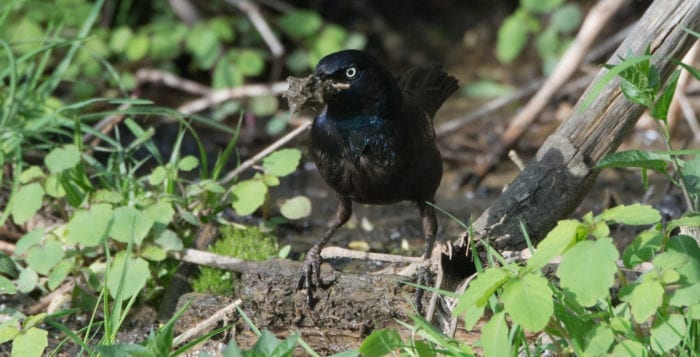By John L. Turner
I have always wanted to have a vegetable garden with fruit trees and bushes to grow food for my family, but the Nassau County house we lived in for 35 years, unfortunately, just didn’t have the yard space. In that small space my effort at growing veggies and herbs was restricted to pots of tomatoes and basil on a wooded back deck and I simply had no room for bushes or trees.
But moving to Setauket, on a property with a long back yard, gave ample opportunity to construct a large garden, and construct I did. Surfing the Internet in general, and Pinterest specifically, I scrutinized dozens of different designs, layouts, and materials before finally settling on the idea of two raised, double concrete block beds, one in the shape of the letter “S”, the other its mirror image and one more rectangular bed in the front (I’ve since expanded the garden about 50% by adding on two wings).
I liked the idea of the concrete blocks because it meant not having to spend so much time with 65-year-old knees on the ground, concrete because it will never rot out and need to be replaced, and because I could plant herbs in the hollows of the blocks. The S-letter configuration would allow easy access to any part of the two beds. I planted twenty blueberry and twelve raspberry and blackberry bushes along with a very young fig tree around the garden’s perimeter. A peach and Italian Plum tree are on order.
I had several motivations for the garden. I have long wanted to live more sustainably and one way to do that is to eat healthy, pesticide- and fertilizer-free foods close to where they’re produced. Well, I never use pesticides or fertilizers and I couldn’t get much closer than the 200-foot distance between the garden and kitchen. And given the omnipresence of the COVID pandemic and its regular and depressing drumbeat of death filling the world with despair, I needed to participate in something that was life affirming and enriching. I had embraced the saying: “When the world wearies and society fails to satisfy, there is always the garden.”
There is another garden saying: “There are no gardening mistakes, only experiments.” Well, I conducted my first “experiment” when I planted too many plants too close together, ensuring a vegetable jungle in the weeks and months ahead. The beans didn’t behave themselves despite my effort to “grow them vertical,” climbing on everything around them and their viny web and the tomato tangles made it a wee bit difficult to get some of the beans and cherry tomatoes once ripe.
Despite the tangle creating more shade than is preferable, all was good though and the eggplants (graffiti, Japanese, American) tomatoes (Beefsteak, heirloom, and two types of cherry), squash (Spaghetti, Butternut, zucchini), cucumbers, artichokes, strawberries, broccoli romanesco, one lonely artichoke bought on a whim, collard greens, beets, kale, swiss chard, corn, many types of melons, numerous pepper varieties, leeks, and basil filled the beds. Herbs I diligently planted in the hollows of the blocks included parsley, sage, rosemary, and thyme (an ode to Simon and Garfunkel), dill, mint, chocolate mint, lavender, cilantro, and oregano.
Watching countless YouTube videos about vegetable gardening I soon learned the value in “going vertical” as a means to incorporate more veggies. So to add vertical dimension to the garden I arched cattle panels — four foot wide, sixteen foot long meshed metal fences — over the paths, connecting to the beds. The panels provided a surface for the squash, beans, and tomatoes to grow on, thereby using space more efficiently and allowing me to plant more veggies in the beds.
All was good until the local deer paid a visit. The first night they were surreptitious, revealing their presence with only a scattered hoof prints in the beds and a few nipped peppers. And here I made a true mistake. Applying human and clearly non-deer logic, I assumed the deer discovered the garden, explored it, and made the decision that given their very modest amount of damage, that it generally wasn’t to their liking. Well, the next night they returned and “liked” it a lot more, in fact I might use the word love — they devastated the peppers and beets, and ate all of the broccoli and the swiss chard but one. With the help of my son Travis, a Rube Goldberg style, yet effective eight foot high deer fence was soon installed and has worked like a charm since.
One unexpected result in the garden were the appearance of mystery veggies and fruits I never planted, springing up in places where I didn’t plant them. Indicating the presence of seeds in the eight yards of topsoil/compost mix I used to fill the beds were some cantaloupes, melons, and tomato varieties I hadn’t bought. At first I was confused and then it dawned on me — unless screened very well there are a lot of seeds in soil, as evidenced by how quickly neglected dirt piles at construction sites start to sprout growth.
There was enormous satisfaction for starting something and then letting nature go at it. I marveled at the rapid growth of the plants, their strength and vitality, as they prospered due to the simple combination of adequate water, ample sunlight, and rich soil. Within a month eggplants, two inch high plants when planted, had grown to three feet and started blossoming in multitudes, their beautiful purple petals the texture of tissue paper contrasting with the bright yellow pistils. Tomatoes grew six to eight feet in two months and squash, adorned with brilliant flowers, rested atop the archways. Melons and cucumbers splayed this way and that. By late summer life was riotous in the garden.
And the scents and smells — basil, thyme and rosemary, in full sunlight, effervescing aromas into the air around them, the addictive smell of the good earth when trowel intrudes the surface to make room for planting a small pepper plant filled with so much promise. And the taste of vine-ripe tomatoes, so tomatoey (is that a word?) filling both palate and nose with the unique smell of this ubiquitous member of the nightshade family.
Birds were omnipresent throughout the gardening season. A pair of red-tailed hawks, screeching overhead, gave cause to gaze skyward; this pair bred, I think, in the nearby state-owned Patriots Hollow property. Catbirds regularly “meowed” from the bushes around me and a mockingbird regaled in song on a daily basis amidst the sweet whistling song of Baltimore Orioles.
Both Carolina Wrens and Song Sparrows often perched on the panel arches, probably eyeing which tomato they were going to pierce! Speaking of perched birds on panels — as I was harvesting cherry tomatoes on an October morning Emmy, one of my Springer Spaniels, flushed a bird from the ground. It flew toward me and momentarily perched on the top of a cattle panel. Suddenly and delightfully, three feet away at eye level was a resplendent male Black-throated Blue Warbler. Eye candy in the garden.
We found great joy in harvesting the bounty of vegetables and using them in various recipes. Swiss chard with raisins and pine nuts, collard greens with turkey bacon, various eggplant dishes, sautéed peppers and leeks, roasted tomatoes and beets, and fresh blueberries were but a few of the meals the “back 40”provided. Often the veggies never made it to the house — occasionally a salt shaker would accompany me to the garden. I’m not sure there’s anything tastier than a sweetened, freshly picked cherry tomato sprinkled with a little dash of salt.
I also found joy in composting. All the veggie discards from food prep ended up in a large jar regularly brought to the compost bin. With each jar dump the product of this year’s garden was being recycled, for use as a soil supplement next year, connecting this year to the next. I felt good about this, in knowing I wasn’t adding waste to the garbage stream the town picks up at curbside which is incinerated with the ash being dumped at the town landfill, but rather was used to make soil that will nurture the growth of future plants.
After the first year, I’ve learned a lot about gardening; things done well and things done poorly, some reflecting beginner’s luck while others were gained through experience and insight. What is most clear to me is that I obtained so much more than a bounty of tasty vegetables as I too gained a bounty of lessons, experiences and memories. This reminded me of one last quote by a gardener who noted: “I like gardening. It’s a place where I find myself when I need to lose myself.”
A resident of Setauket, John Turner is conservation chair of the Four Harbors Audubon Society, author of “Exploring the Other Island: A Seasonal Nature Guide to Long Island” and president of Alula Birding & Natural History Tours.

